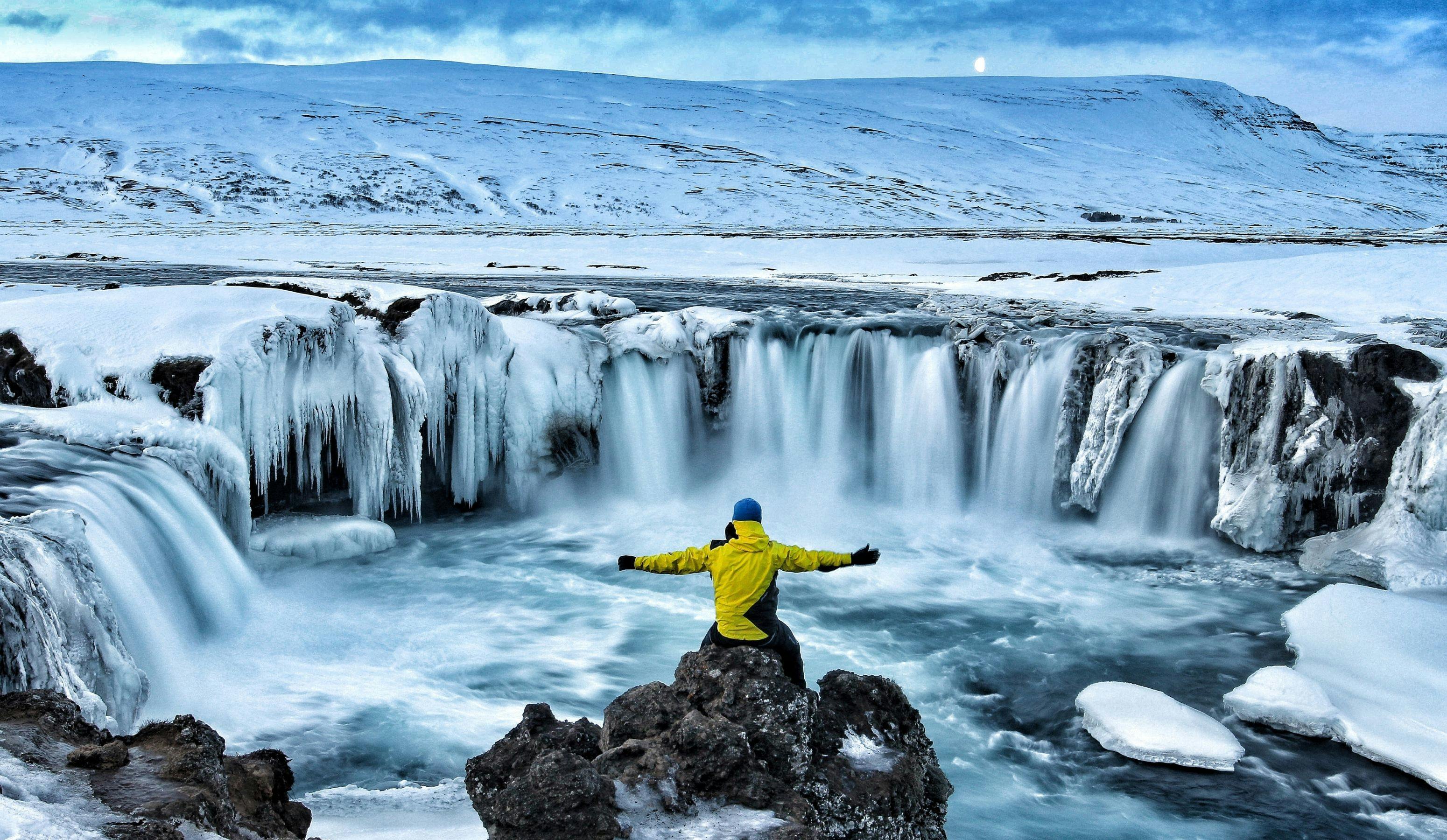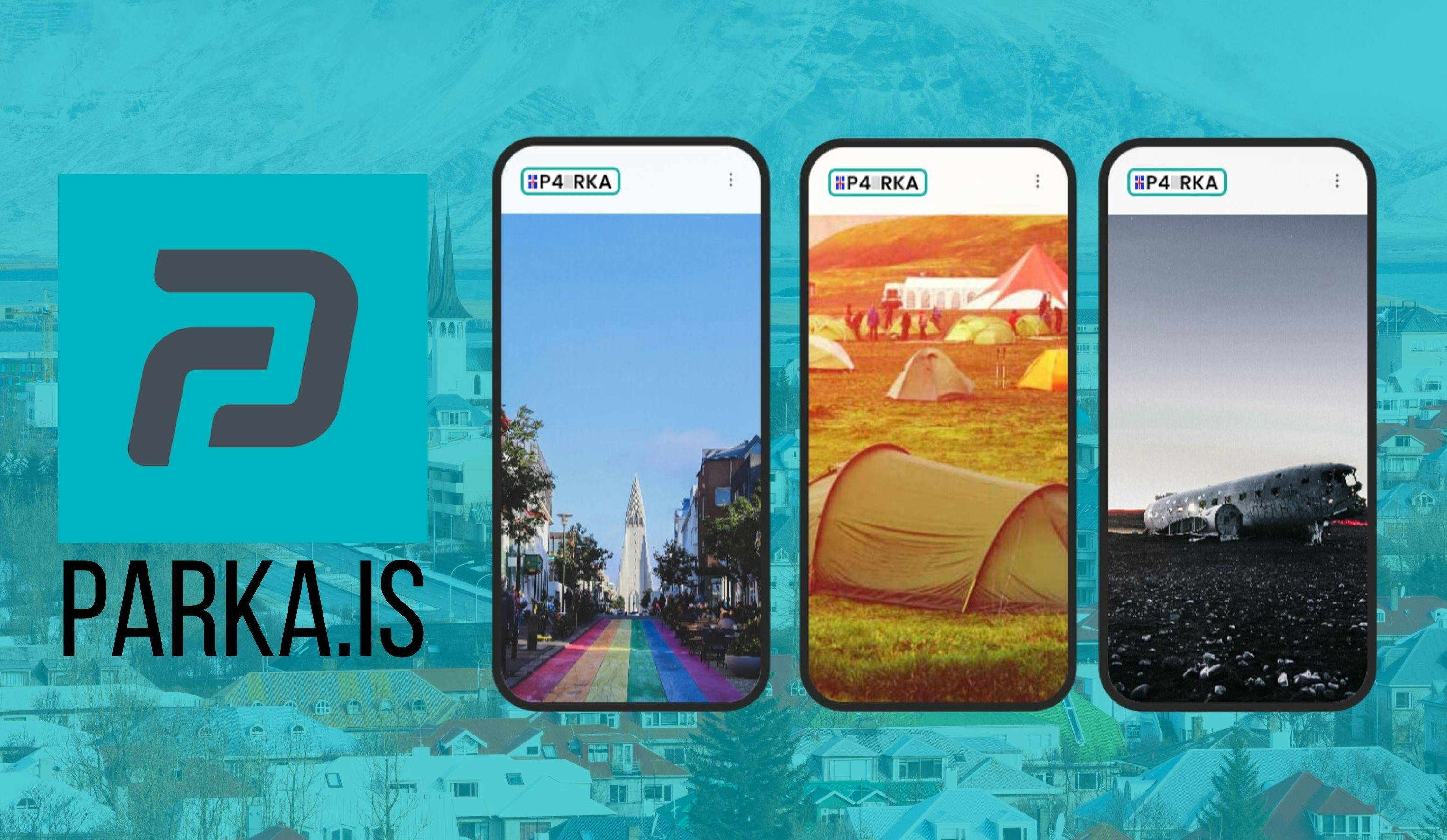
Guides
Visiting Iceland in March: Longer Days, Northern Lights, Glacial Hikes & More
Visiting Iceland in March presents an opportunity to experience the magic of Iceland’s winter landscape transitioning into the country’s unique version of the spring season. For travelers seeking adventure, tranquility, and the raw beauty of nature, March in Iceland offers an unparalleled experience.
Weather Conditions in March
March in Iceland is characterized by its dynamic weather, with conditions that can shift rapidly from clear skies to snowstorms. The average temperature ranges from -2°C to 3°C (28°F to 37°F), but the wind chill can make it feel colder. Despite the cold, the days grow longer, and the increasing daylight brings new life to the island's spectacular scenery.
The Magic of Increased Daylight
One of the perks of visiting Iceland in March is the noticeable increase in daylight hours. The month starts with approximately 10 hours of daylight and ends with about 13 hours, giving travelers more time to explore the island's natural wonders during winter. This shift is a precursor to the midnight sun of the summer months, offering a balance between the dark, aurora-filled nights and longer daylight for exploring.

How to Pack for Winter in Iceland
Packing for Iceland in March requires preparation for cold temperatures and unpredictable weather. Essentials include:
- Thermal layers: Bring moisture-wicking base layers to keep warm and dry.
- Waterproof outerwear: A waterproof and windproof jacket and pants are crucial.
- Insulation: A down jacket or fleece for insulation during colder moments.
- Footwear: Waterproof, insulated boots with good grip for icy conditions.
- Accessories: Don't forget gloves, a warm hat, and a scarf to protect against the wind chill.
- Swimwear: For the geothermal pools and hot springs, which are a must-visit in any season.
Road Conditions & Driving in Iceland in March

March can still bring winter driving conditions, including snow, ice, and limited visibility. Nordic Car ensures that all rental vehicles are equipped for winter driving, with studded tires and necessary safety features. It's crucial for drivers to be prepared for varying conditions, check the weather and road conditions regularly, and drive cautiously, especially on more remote roads that may not be as well maintained.
Why March is a Lovely Time to Visit Iceland
March is a transitional period in Iceland, offering the best of winter's beauty with the promise of spring. The landscapes are still adorned with snow, but the increasing daylight and milder temperatures make outdoor activities more enjoyable. It's a time when the island is less crowded, allowing for a more intimate experience with nature.
Top Activities to Do in March
March in Iceland is a treasure trove of activities that cater to both the adventure-seeker and those looking to immerse themselves in nature's serene beauty. The unique conditions of this month provide a variety of experiences that are both exhilarating and calming. Here's an expanded look at the top activities to indulge in during your March visit:
1. Northern Lights Hunting

The Northern Lights, or Aurora Borealis, are one of Iceland's most sought-after natural phenomena. March offers some of the best conditions for viewing these ethereal lights as the skies are still dark enough, yet the weather is milder compared to the peak winter months. The key to a successful Northern Lights hunt is flexibility; be ready to venture out at a moment's notice when conditions are favorable. Many local guides offer tours with this flexibility in mind, providing not just transportation but also valuable insights into the science and folklore surrounding the auroras. Locations away from city lights, such as Thingvellir National Park, provide ideal viewing conditions. Remember, patience is key, as aurora displays can be unpredictable and vary in intensity.
2. Ice Cave Tours

March is a pivotal time for exploring Iceland's stunning ice caves, as the warming temperatures of spring can start to affect their accessibility and structure. These natural wonders, sculpted within glaciers, are renowned for their deep blues, intricate formations, and the play of light through their icy walls. Guided tours, essential for safety and insight, often combine cave exploration with other activities like glacier hiking, making for a comprehensive glacial experience. The Crystal Cave in Vatnajökull National Park is a popular choice, known for its breathtaking beauty and the surreal experience it offers.
3. Snowmobiling and Glacier Hiking

For those craving adrenaline-pumping action, snowmobiling across Iceland's vast, snow-covered landscapes offers an unparalleled thrill. Tours typically take you atop majestic glaciers like Langjökull or Mýrdalsjökull, where you can speed across the ice while surrounded by stunning panoramic views. For a more grounded experience, glacier hiking allows you to strap on crampons and traverse these icy giants on foot, guided by experts who can lead you safely through crevasses and to vantage points offering spectacular views. These activities not only provide a rush of excitement but also a profound connection with Iceland's dynamic and ever-changing glacial landscapes.
4. Hot Springs and Geothermal Pools

After a day of adventure, there's no better way to unwind than by soaking in one of Iceland's many geothermal pools. The Blue Lagoon is perhaps the most famous, with its milky blue waters rich in silica and sulfur, but there are many lesser-known hot springs scattered throughout the country that offer a more secluded and intimate experience. The Secret Lagoon, located in the Golden Circle area, is a natural hot spring where you can relax in the warm waters while surrounded by the raw beauty of the Icelandic countryside. These geothermal wonders are not only soothing but also offer health benefits, making them a must-visit for relaxation and rejuvenation.
5. Whale Watching

The waters surrounding Iceland are teeming with marine life, making whale watching a popular activity. Tours departing from Reykjavik or Husavik, the latter often dubbed the "Whale Watching Capital of Iceland," offer the chance to see various species, including minke whales, humpback whales, and sometimes even the majestic blue whale. These tours not only provide an opportunity to witness these magnificent creatures in their natural habitat but also offer educational insights into their behavior and conservation, making it a fulfilling experience for nature lovers and families alike.
Each of these activities offers a unique way to experience the diverse and dynamic landscapes of Iceland in March. Whether you're gazing up at the auroras, exploring the depths of an ice cave, feeling the rush of a snowmobile, unwinding in a geothermal pool, or marveling at the sight of whales, your adventure with Nordic Car promises to be filled with unforgettable moments that capture the essence of Iceland's natural beauty.
March Events and Holidays in Iceland
- Food and Fun Festival: This event in Reykjavik celebrates Icelandic cuisine, with international chefs collaborating with local restaurants to create innovative dishes.
Cultural Insights and Tips
- Embrace the Icelandic concept of "Þetta reddast" (everything will work out okay). The unpredictable weather and conditions are part of the adventure.
- Try local delicacies like fermented shark, dried fish, and Icelandic lamb to immerse yourself in the culinary culture.
- Engage with the locals. Icelanders are known for their friendliness and storytelling prowess.

Sustainable Travel Tips
As you explore Iceland's ethereal landscapes, remember the importance of leaving no trace. Respect wildlife, stay on marked paths, and always carry back what you bring. Nordic Car supports sustainable travel practices and can offer advice on how to explore Iceland responsibly, ensuring that the natural beauty of the island is preserved for generations to come.
Visiting Iceland in March offers a unique blend of winter's majesty and the budding signs of spring. With the right preparation and a rental car from Nordic Car, travelers can explore the island's diverse landscapes at their own pace, from the ethereal northern lights to the rejuvenating warmth of a geothermal pool. Whether it's the thrill of adventure or the peace of nature's tranquility, Iceland in March provides an unforgettable experience that beckons travelers from around the world.
POPULAR ACTIVITIESPowered by:

We recommend booking tours and activities with our friends at Reykjavík Tourist Info. They offer all the most popular things to do, and their prices are always great. Here are a few of our favorite tours.
On their site you can see everything they have to offer: www.RTI.is
EXPLORE FURTHER

Embark on a Journey of Discovery: Whale Watching in Ólafsvík

Discovering the Untamed Beauty of Iceland's Westfjords


Celebrating Christmas in Iceland? Here are 7 Things You Should Know

How to avoid speeding tickets in Iceland

Parking in Iceland and how to pay for it

Exploring Iceland in July: A Comprehensive Travel Guide


The Unique Charm of Icelandic Horses: A Journey Through History &Modern-Day Interactions


Unveiling Creativity: Dive into the World of Noztra Pottery Painting Studio in Reykjavik
Hear from Our Customers
Welcome to Our Community - your hub for insightful reviews and authentic opinions. Join us in shaping the conversation where your voice matters!



